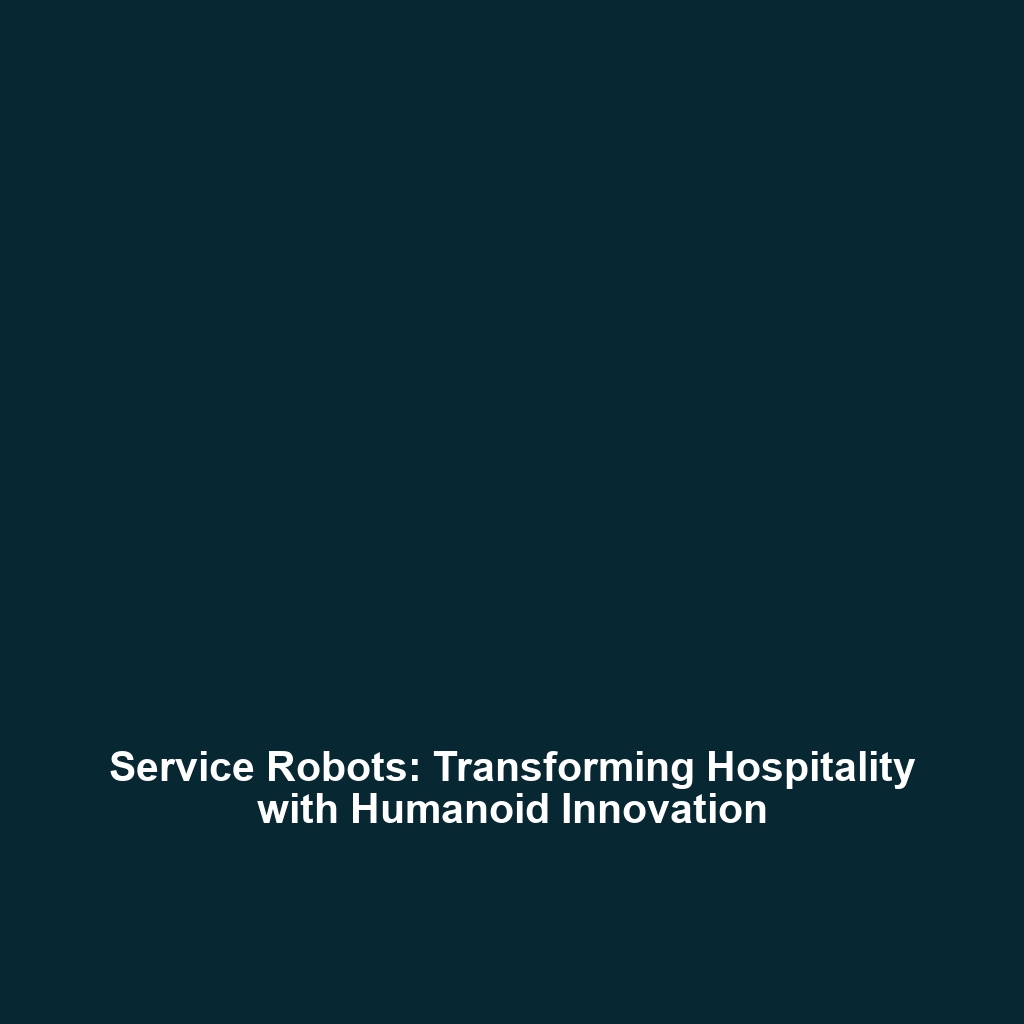Service Robots: Humanoids in Customer Service and Hospitality
Introduction
In recent years, service robots have become an integral part of various industries, especially in customer service and hospitality. These humanoid robots are designed to interact with guests, assist in various tasks, and enhance the overall customer experience. The significance of service robots extends beyond mere automation; they are reshaping how businesses operate, highlighting the growing role of technology in human interactions. This article delves into the major concepts, applications, challenges, and future innovations surrounding the implementation of humanoid robots in customer service and hospitality.
Key Concepts
Understanding Service Robots
Service robots, particularly humanoids, are designed to assist humans in completing tasks, often in environments where customer interaction is crucial. They embody features that imitate human behavior, making them more relatable to users. Key concepts related to humanoid robots in customer service include:
- Human-Robot Interaction (HRI): This focuses on how customers perceive and interact with humanoid robots.
- Automation: The use of robots to complete tasks traditionally performed by humans.
- Consumer Acceptance: This involves studying how customers embrace and trust humanoid robots in service roles.
Applications and Real-World Uses
The adoption of service robots in customer service and hospitality is on the rise. Here are some notable applications of humanoid robots within this category:
- Reception and Concierge Services: Robots like ‘Pepper’ greet guests, provide information, and assist with check-ins.
- Food Service: Robots can take orders, serve food, and handle payments in restaurant settings.
- Cleaning and Maintenance: Humanoid robots are utilized in housekeeping tasks to enhance operational efficiency.
These examples illustrate how service robots improve customer satisfaction and operational effectiveness in hospitality settings.
Current Challenges
Despite the advancements, there are several challenges in deploying service robots, especially humanoids, in customer-oriented roles:
- Technical Limitations: Humanoid robots still face challenges in understanding complex human emotions and responses.
- Cost of Implementation: High initial investments and maintenance costs can hinder adoption.
- Privacy Concerns: Issues surrounding data security and customer privacy remain significant hurdles.
Future Research and Innovations
The future of service robots in customer service and hospitality is promising, with emerging innovations that may redefine their roles. Some of the exciting research areas include:
- Advanced AI and Machine Learning: Improvements in AI can equip humanoid robots with better decision-making abilities.
- Enhanced Interactivity: Future humanoids may utilize more sophisticated speech and emotional recognition technologies.
- Integration with IoT: Service robots could become part of a broader connected ecosystem, enhancing their functionalities.
Conclusion
Service robots, particularly humanoids, are reshaping the landscape of customer service and hospitality. Their significance in enhancing customer interactions, streamlining operations, and providing innovative solutions cannot be overstated. As advancements continue, businesses must remain informed about the emerging trends in humanoid robots. For further reading, explore future innovations in robotics or learn more about the impact of robotics in hospitality.
